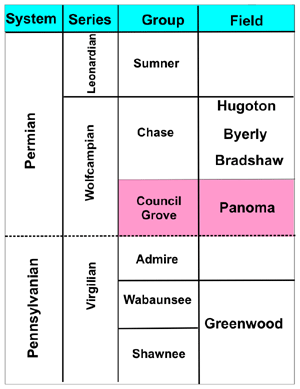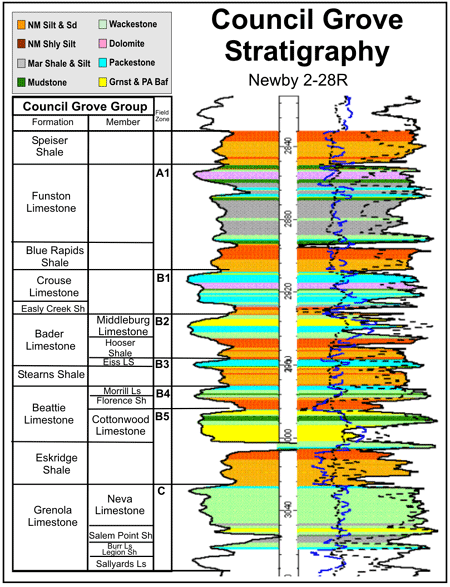Stratigraphy
Seven Sequences
The Council Grove Group is comprised of seven fourth-order marine-nonmarine sequences bounded by unconformities on exposed carbonate surfaces. A typical vertical succession, beginning at the exposed carbonate surface, are primarily wind blown silts, very fine sands and clay rich silts with paleosols. Above a flooding surface are generally thin, shallow water carbonates with grain-supported textures deposited during the initial, shallow water portion of the flooding event. These are overlain by deeper water dark marine siltstones and silty carbonate mud- and wackestones which are, in turn, overlain by “cleaner” mud- and wackestones deposited in shallower water. With progressive shallowing these are overlain by either packstones and grainstones, interpreted to indicate increased wave or tidal agitation; quiet water, lagoonal, mudstones and wackestones; or silty dolomites and dolomites, where there was little or no wave agitation. Fenestral and laminated tidal flat carbonates are also common near the top of the carbonate interval. Exposure is evidenced by well-developed calcretes, root molds, and other indicators. Higher frequency cycles are evident in the Funston and Neva, in particular.
 |
 |
|
|
e-mail : webadmin@kgs.ku.edu
Last updated May 2003
http://www.kgs.ku.edu/PRS/publication/2003/ofr2003-30/P1-04.html
